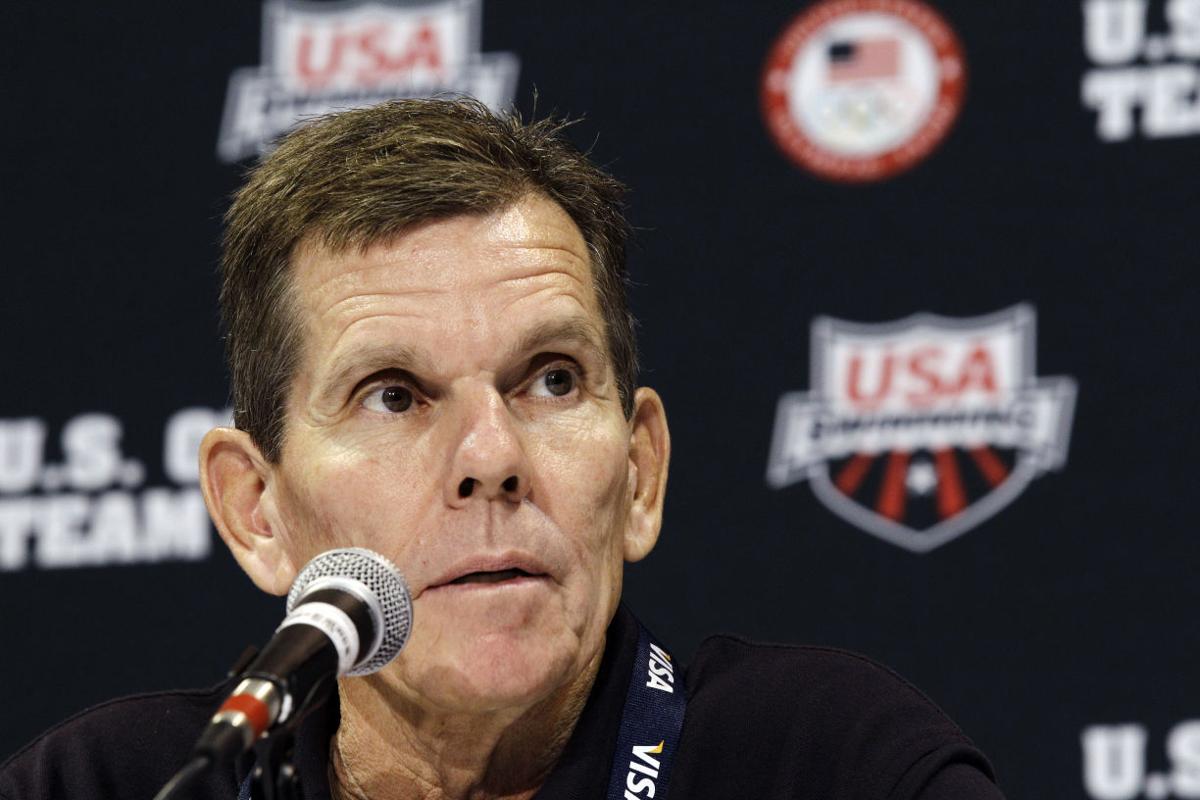Seven years ago, UA swimming coach Frank Busch wanted to replace Jim Livengood as the school’s athletic director. Some might’ve blown it off as the old way of college sports: a successful coach moving up the chain to the top chair.
Busch, then 59, was already among the Mount Rushmore of modern UA coaches, with Jerry Kindall, Lute Olson and Mike Candrea.
Was he qualified to be an AD? Busch had not done any significant fundraising or infrastructure construction, but he operated two teams, the men’s and women’s swimming programs, and also was fully vested in perhaps the nation’s top club swimming operation, Ford Aquatics. Busch was so good at what he did that six times he was selected the NCAA coach of the year.
Rather than seriously consider Busch, Arizona hired Greg Byrne from Mississippi State. A year later, Busch became the director of USA Swimming’s men’s and women’s national teams, which dominated the 2012 and 2016 Olympic games.
It was Busch’s athletic directorship, wrapped in red, white and blue.
When he announced last week he was retiring from USA Swimming, the timing seemed too coincidental: Busch would be available at the time Arizona was searching for Byrne’s successor.
The man directing the search, Cedric Dempsey, hired Busch away from the University of Cincinnati in 1990.
At 66, would he return to Tucson for four or five years, become the AD and serve as a mentor for interim AD Erika Barnes, who would ultimately replace Busch?
Doesn’t that sound like a positive scenario?
At Arizona, Byrne was a people person and communicator of the first rank, but that, too, is Busch’s strength and then some.
When Tucson auto dealer Jim Click recently sought someone to provide a motivational message to his employees, he flew Busch in from Colorado Springs to do so.
But that’s where the Busch-returns-to-Tucson story ends.
He will almost certainly not be offered the AD job at Arizona, and I don’t think he would accept it, if offered. (Although he is likely to relocate here from Colorado.)
I don’t think the workload would be too much, but why would anyone with a Hall of Fame career in the bank agree to the responsibility of stewarding 500 student-athletes day-to-day, taking on the challenge of raising about $150 million to get a football stadium up to modern code, and work a 24/7 schedule?
I suspect Arizona will tempt Kansas State’s exemplary AD John Currie. He earns $775,000 annually and has a $1.5 million buyout. He might be first on any list in the AD job market.
Why Currie? Dempsey has always sought those not thought to be available. He got a Final Four basketball coach from Iowa (Lute Olson), and when Arizona’s football coaching job opened in 1987, he offered the job to head coaches from Ohio State, Baylor and Boston College before finding a gem at Hawaii, Dick Tomey.
Dempsey’s discovery of 38-year-old Byrne at Mississippi State, an athletic director at an SEC school with greater resources than Arizona, was also in that vein.
And one more thing: If Arizona can’t land (or doesn’t fully pursue) Currie, Central Michigan AD Dave Heeke provides an intriguing backdrop.
Heeke was the senior associate AD/chief of staff at Oregon for 18 years as the Ducks emerged as an athletic program on the national scope. He then moved home (he is from East Lansing) to run his own shop.
At 52, Heeke has the Pac-12 roots and background in fundraising to take on the challenge at Arizona. He declined the AD’s job at NAU in 2004, and is likely ready for a bigger job.
And remember this: Dempsey and iconic Arizona athletic director Pop McKale both are graduates from Albion College in Michigan. That’s where Dave Heeke got his degree, too.
Stay tuned.





